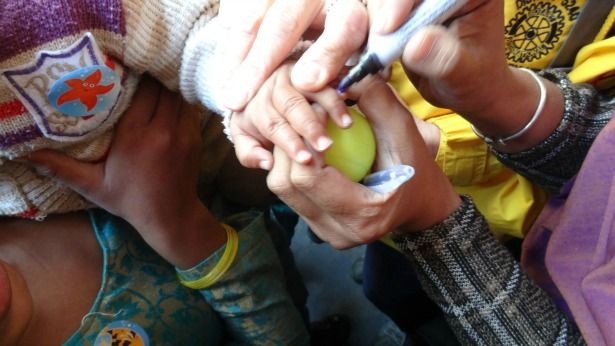March 19, 2013 | The Atlantic
India held its annual National Immunization Day for polio on February 25. The country has now gone two full years without a single new case. If India continues on this track, it will be declared polio-free in February 2014. This marks a significant feat for India, and more so for the global health community, given that the Global Polio Eradication Initiative began in 1988—over 25 years ago—as a partnership between UNICEF, Rotary International, the Centers for Disease Control, and the World Health Organization. During each National Immunization Day, approximately 170 million children under the age of five are vaccinated.

